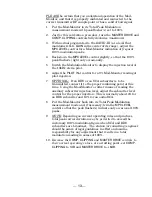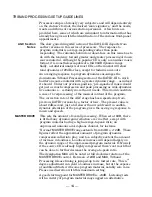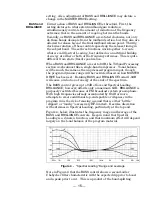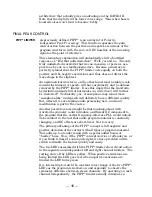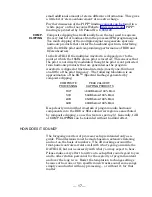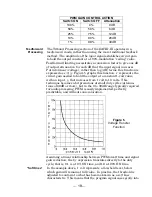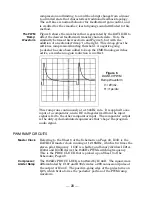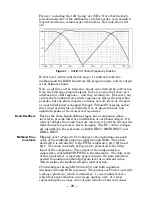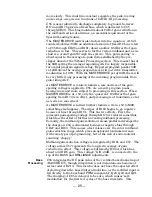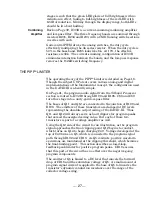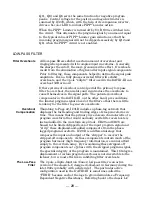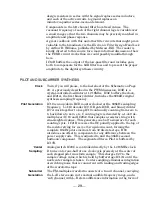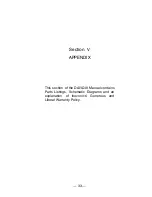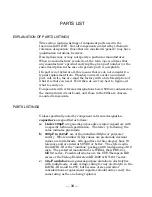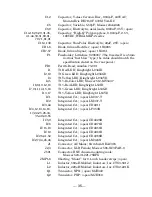
20
compression and limiting to avoid the abrupt change from a linear
to a limited state that characterizes traditional feedback topology.
The soft knee is normal behavior for feedforward gain control, and
is credited for the smoother, less fatiguing sound attributed to this
method.
The PWM
Ramp
Waveform
Figure 6 shows the waveform that is generated by the
DAVID-III
to
affect the desired feedforward transfer characteristic. Note the
similarity between this waveform and Figure 5, but with the
addition of an extended droop to the right. This droop gives the
soft knee compression/limiting threshold. A negative-going
pedestal has also been added to keep the CMOS analog switches
active, even when no gain reduction is in effect.
Figure 6
DAVID-III
PWM
Ramp Waveform
V=2V/div.
H=1µs/div.
This ramp runs continuously at a 152kHz rate. It is applied to one
input of a comparator, and a DC voltage derived from the input
signal is fed to the other comparator input. The comparator output
is the duty-cycle-modulated squarewave that chops the program
audio signal.
PWM RAMP CIRCUITS
Master Clock
Referring to the Sheet 6 of the Schematic on Page 43, IC3D is the
DAVID-III
master clock running at 1.216MHz, which is 64 times the
stereo pilot frequency. IC3C is a buffer, and binary dividers IC21A,
IC43A and IC43B derive the 152kHz PWM switching frequency.
This is the PROC CLOCK that is picked up on Sheet 3 of the
Schematic, Page 40.
Compressor/
Limiter Ramp
The 152kHz PROC CLOCK is buffered by IC44D. The squarewave
differentiated by C107 and R302 creates a 200 nanosecond pulse at
the output of IC44C. The positive-going edge of the pulse turns on
Q25, which brute-forces the pedestal portion of the PWM ramp
waveform.








